Winged infantry gunner
It was not enough for Pavel Grigorievich to simply organize troop tests and take the weapon into service - it necessarily had to meet Margheva standards: to be landed, light and at the same time possessing sufficient firepower to withstand the potential infantry of the army.
Vasily Filippovich Margelov, like no one else, knew that cadres decide everything. Therefore, he took the best of the best as his deputies and heads of services. Ivan Ivanovich Lisov - Deputy Commander of the Airborne Forces - Head of the Airborne Service, Alexey Vasilyevich Kukushkin - Chief of Intelligence of the Airborne Forces, and finally, Pavel G. Kalinin - Chief of Artillery of the Airborne Forces, later Deputy Commander for Armaments. All these people were front-line soldiers, they had a great combat experience. Margelov directed their knowledge and energy to the construction of the Airborne Forces as a modern highly mobile kind of military.
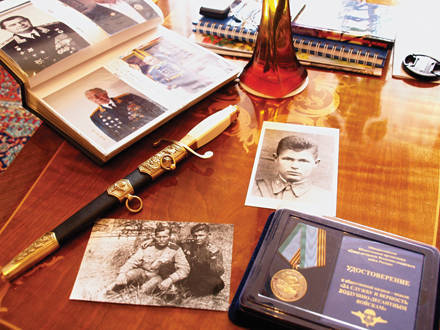
I was lucky to talk with Lieutenant-General Kalinin. Pavel Grigorievich told a lot of interesting things about his service in the Airborne Forces, but he began with memories of the Great Patriotic War.
Forty, fatal ...
- 22 June 1941, in the village of Zalesov, Altai Territory held a school ball. Naturally, there are a lot of young people, noise, fun ... and suddenly the school director Tikhon Nikolayevich Tishov literally runs in. He asks to immediately stop dancing and play the “listen to everything!” Signal. Silence reigned, and we learned that the Germans had attacked our homeland. We, graduate students, under the guidance of the class teacher Boris Mikhailovich Kramsky, went to the military enlistment office and signed up for the front as volunteers. Five people were selected from ours, and a week later we were at the Yurga station near Novosibirsk, where marching companies formed. From the first days we were equipped as it should be: boots with windings, duffel bags, which were filled with sand in the course of training. With these bags and the good old trilineas, we made daily marches from 5 to 10 kilometers, in the heat ...
After some time, we were informed that the 2-e Tomsk Artillery School was being formed. Those who wish to do that have 10 classes of education and above, must pass exams: in Russian language and literature, mathematics. Received! However, only 5 months were studied - from July to November of the 1941 year, and already on December 1, the order of the commander of the Siberian military district about the assignment of military ranks was read out to us on a solemn ceremony.
Our entire platoon was sent to form the 51 artillery regiment of the Kalininsky front into the forest, near the station Inza near Ulyanovsk. December was extremely cold. There were no barracks. Right there, we began to make improvised huts out of branches and snow, and after two or three days we were approached, as we jokingly called, “horse-drawn” and artillery pieces. It took two months to form the unit itself and conduct combat coordination. In February, we were on the Kalininsky front, about 150 kilometers from Moscow, when the Germans were already defeated and driven back to the west. At this time, the front turned to defense. For almost the entire 1942 year, local battles were fought; artillery moved along the front to fire at the enemy.
In February, the 1943 officers who received combat experience were sent to replenish the 85 Corps Artillery Regiment of the 8 Estonian Rifle Corps, which suffered heavy losses when the city of Velikie Luki 19 was taken on January 1943.
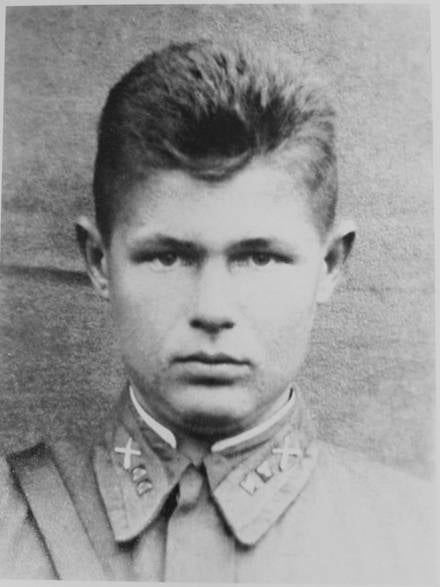
I was appointed to the position of deputy, and in May, the commander of the battery. The regiment was armed with 76-mm cannons and 122-mm howitzers M-30. Tractors - "Studebaker". This is no longer a “horse train”. The personnel of the regiment consisted of Russians, Ukrainians and Estonians. The regiment was attached to rifle divisions operating on the main axes, was included in the regimental artillery groups or in the counter battery group. Here you can highlight the participation of the regiment in the battles on the Nevelsky direction and directly in the liberation of the city of Nevel, with the loss of which the fascist never reconciled, trying to sell the lost land in the Pskov region as expensive as possible. The Germans stubbornly resisted, and the gunners mostly fired direct fire, clearing the way for the advancing infantry. Finally, on the night of October 7, Nevel was completely liberated.
At the end of October in the area of. Nosva station, my battery was ordered to maintain fire in the penal battalion conducting reconnaissance in battle. Without sufficient reconnaissance of the front line and the nearest depth of enemy defense, without aviation and artillery training penalties went on the attack. When approaching a minefield and wire fences under a hurricane rifle machine-gun fire, the battalion lay down. It just started a mass execution. The battalion was ordered to return. We, the battalion commander and the surviving plastunskiy penalties and dashes, wet, tired and suppressed by the rout, returned to the front line. But we completed our task, because the Germans found themselves. While the battalion was shot with impunity, mortar and artillery positions and observation posts of the enemy were revealed. Returned, of course, not all, there were a lot of dead. It was a shame that many of the fines did not get their second chance - after all, most of them were delinquent officers.
In February, 1944, our troops reached the city and the river Narva; The 85 th Regiment now fought as part of the Leningrad Front. In order to capture the bridgehead on the west bank, an offensive was organized across the island of Camparoll, located in the middle of the river. By dawn, we arrived with the commander of the guard division, Major Tutaev, on the island, where the marine brigade was concentrated. After the 30-minute artillery preparation brigade rushed to storm the positions of the Nazis, which were located on the opposite, steep, almost sheer shore. We naively believed that the Germans in the course of such fiery preparation were suppressed, but they calmly sat out all these 30 minutes in dugouts, blocked gaps and field fortifications and at the time of the attack, the message moves back to their positions.
As soon as the marines approached the wire obstacles, the enemy opened up hurricane fire of all kinds weapons. Aviation went, as they say, over the heads. Offensive choked. An island with small shrubs was turned into a mess of earth, snow and blood. But our misfortunes did not end there. We crossed the island to the island itself, but when we left, it turned out that the Germans had directed bombing and assault attacks on the edge of the coast. As a result, a polynya was formed, which by itself made it difficult for organized waste. Remarkable officers were killed in our division: deputy commander for political affairs, Captain Potashev, chief of intelligence of the division, Senior Lieutenant Evdokimov, commanders of control platoons, Senior Lieutenant Volobuyev, and Senior Lieutenant Lutsenko.
There is another interesting episode with Narva. As I have already said, our artillery regiment fought as part of the 8 of the Estonian rifle corps, whose regiments, in contrast to the attached units, were staffed exclusively with ethnic Estonians. As it turned out, the Nazi units consisting of Estonians opposed the corps in its offensive zone. After the capture of Narva, we witnessed a dramatic meeting of captured Estonians who fought for the Germans with the Estonians of our 8 corps. On the different sides of the front were brothers, fathers and other family members of different degrees of kinship. Everyone hugged, cried, everything was so mixed up that it became unclear who and whom he had taken prisoner.
In war I met my father. He fought on the First World War, was the St. George Knight, and having exchanged the fifth ten, he volunteered for the Great Patriotic War. How many years have passed, and I remember that meeting in all details.
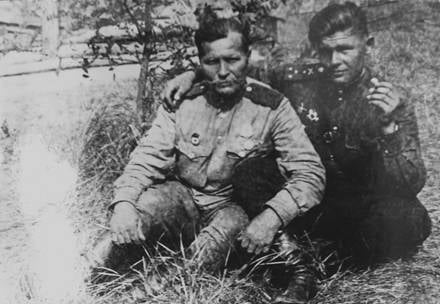
After the capture of Tallinn in September 1944, the regiment supported the rifle division, which was advancing along the strait. Now our regiment fought as part of the 2 Baltic Front. My KNP was in the attic of the house where the battery commander from the heavy howitzer brigade of the guard, Captain Kopylov, soon arrived, having received the same task. Spun his KNP near. In the morning Kopylov brought mail. I noticed that the envelope contains a field mail number, like my father, who was at the front since 1941. I asked Kopylov if he had Private Kalinin in the battery. “Even two. One is young, the other is old and with a lush mustache. What do you want? ”-“ Come with a mustache, I will watch from the side ”. Called. We stand on the porch, smoke. There is a soldier with a carbine, over the shoulder of his overcoat in the roll. Dense, broad-shouldered, taut. Father ... Passing by me, he saluted famously. Kopylov asked him a couple of questions and let him go. Passing by me, once again famously saluted and walked leisurely. Did not recognize. Three years have passed. And on the front year - for three.
In the evening, the regimental commander, Colonel Mikhaylenko, the brigade commander, Colonel Patiforov, and Kopylov and I gathered in the house. Invited father. Comes confused: so many bosses. And a festive table ...
They put him next to me on an empty chair. Sits, do not understand what's the matter. Poured. The brigade commander says to his father:
- You, Grigory Emelyanovich, happy warrior. In World War I they fought for the tsar and fatherland, they deserved two crosses of St. George, met their brother at the front, and during World War II they fight for Stalin’s homeland and met their son. I congratulate you and offer a toast to the meeting, to the military happiness, to the Victory!
The startled St. George Cavalier turns his head in surprise, not understanding anything, but he realizes. But where is the son? .. "Hello, Dad!" - I say. And then my father turned to me, his hand with a glass shook, spilling vodka. Now found out. Father went 51 year, I 21 th. Thus began our joint service with my father in the 85 Guards Narva Red Banner Order of Kutuzov, the 2 class of the Corps Artillery Regiment.
First meeting with paratroopers
In December, after the liberation of Estonia, our artillery regiment arrived in the city of Zhytomyr, where the 55-I division artillery brigade of the 104-th rifle division, former airborne, was formed. Formation involved the commander of the brigade, he is the commander of the artillery division, Colonel Yablochkin. On the basis of the native 85 Corps Artillery Regiment, the 82 Guards Gun Artillery Regiment, the 106 Guards Howitzer Artillery Regiment and the 567 Guards Mortar Regiment were formed.
The artillery brigade regiments were staffed with older soldiers, many fought in World War I and the Civil War.
Once, on a ceremonial formation, Colonel Yablochkin announced that the brigade was part of the 104 Division, the infantry regiments of which were staffed by Stalin's paratroopers, well-trained and infinitely brave fighters. “You and I should be no worse,” the artillery commander concluded.
For the first time, the paratroopers in battle, we saw 16 March 1945, when the division, arriving in Hungary, was put into battle the same day. Our 82 th regiment was then part of the regimental artillery group of the 332 th guards rifle regiment, which fought hard in the area of the town of Shered. We did not hide our admiration when we saw paratroopers: tall, strong and unusually mobile fighters with blue shoulder straps. Their courage and contempt for death bordered on bravado, they didn’t recognize any overruns or creeps on the battlefield - they went to their full height, suffering heavy losses.
After seizing the town of Shered, the rifle regiment went to the river Rab. My division was ordered to support the 3 Infantry Battalion, which received the task to force the river. The battalion was commanded by the Chief of Staff Guard Captain Sukhorukov. The battalion commander was killed, Sukhorukov was wounded, but he did not leave the command post, he ran the battle, wincing in pain. After a short artillery preparation, the river began to be forced on the move.
13 April 1945 was taken Vienna. Fascists and Vlasovites fleeing to the west to surrender to American troops. Our division was given the task, without getting involved in protracted battles, to cut off the escape routes to the enemy in the Prague direction bypass routes. To accelerate the onset of the 1 division, the 82 regiment was assigned to the 3 battalion of the 332 regiment, operating on the main line as an advance guard. The division was ordered to equip "studebakers" with additional seats, remove awnings, have a cruising range of not less than 500 kilometers.
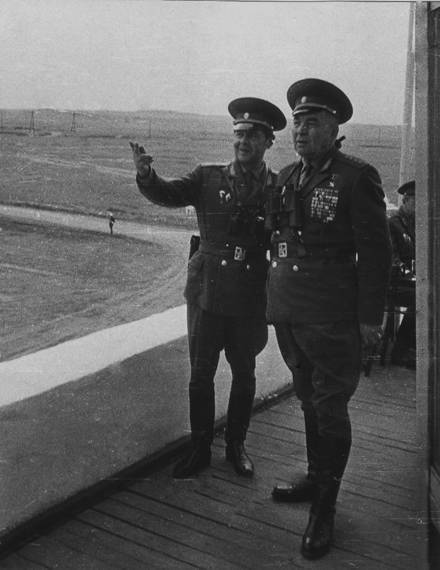
The division lined up in a line of machines, the personnel ahead in the deployed ranks. Prepared to take the paratroopers. Soon the battalion appeared. The same one we supported when crossing the Slaves. My battery men, fighters of the three wars, greeted the battalion with applause, shouts of “Hurray” and with tears of tenderness in their eyes, seeing their sons in the young and cheerful paratroopers who laid down their heads on the battlefields.
The battalion commander captain Sukhorukov gave the order, and the persecution began. It was a natural race - “who is ahead”, when along parallel routes, at maximum speeds, not paying attention to individual shots, rushed west, to the river
Vltava, scattering and chasing them. 12 May 1945 came to Prague.
We passed through Europe quickly. The Romanians and the Hungarians greeted us favorably, the Austrians were wary, with closed shutters, deserted people, and the Czechs with flowers and tables laid along the streets.
Paratrooper No. 1
By a decree of the Council of Ministers and an order of the Minister of the Armed Forces, the infantry divisions and corps of the 9 Army were renamed Airborne and enlisted in the reserve of the High Command.
The 55 I Artillery Brigade was reorganized into the 82 Guards Gun Artillery Regiment of the 104 Guards Airborne Division.
At the same time, the artillery of the airborne troops is being created, and the post of its commander is being established, which is occupied by Colonel-General V. E. Taranovich.
By May 1946, the dismissal of the old soldiers and part of the officers called up from the reserve was completed. The remaining personnel were housed in abandoned wet, moldy dugouts, on two-level plank beds. They slept on lapnik, covered with awnings from cars, and gas masks served as pillows. Dugouts were heated by improvised stoves, illuminated by burning German cable, which smelled more than luminaries. The officers lived with the soldiers in the same dugout, fenced off their cabin with raincoats. Combat training was in full swing. Leaders of the classes wrote notes, diligently preparing for classes.
In September 1946, the 82 th regiment was redeployed to Estonia. Location - railway station Vyru Kabala. Here I made my first parachute jump. From the balloon. The headquarters of 104 Airborne Division was located in the city of Rakvere.
In June, 1947, 104 Guards. The airborne division was redeployed to the city of Ostrov of the Pskov region. The military town was destroyed by half, and the city Island to the ground. Much had to be restored from scratch.
The commander of the 104 division was then Major General Nikolai Tarievlovich Tavartkeladze. It is known that he was related to Beria. Obviously, this played a role in the fact that very soon the division began to receive the necessary construction materials by the trains: glass, glass. And by the end of 1947, the town was commissioned in perfect condition. A lot of attention was paid to the construction and equipment of educational facilities in each parachute regiment of the division, right up to the battalion.
As far as everything was exemplary organized in the 104 airborne division, it was equally launched in the neighboring 76 airborne unit located directly in the city of Pskov. The first post-war commander, unfortunately for a glorious unit, was a very irresponsible and poor organizer. There was no educational material base, no shooting ranges, nor properly equipped landfills. Each airborne division was assigned 200 German prisoners of war, who were obliged to rebuild military camps. We used them to the fullest in the Island. In Pskov, the local head of the administration, using the softness of the commander of the 76 division, used the Germans for the construction of urban infrastructure. Naturally, so long could not continue. In May 1948, a corps party conference was held in Pskov, where officers of all airborne units were assembled. An extensive report was then made by the corps commander, Lieutenant General Mushrooms. He smashed the ill-fated 76-th division to pieces. The next head of the political department of the corps did not change the subject, after which the officers of the 76 airborne division were already looking at the floor without raising their eyes. Concluding his speech, the head of the political department suddenly said: “Well, comrade communists, maybe we will nevertheless listen to the new commander of the 76 division? I am sure he has something to say! ” Then from the second row he got up and went to the podium a tall, handsome, handsome man, in boots polished to such brilliance that, looking at them, one could shave. Before reaching the rostrum, he turned and carefully looked at the entire hall, glancing at the ranks where the officers of the regiments of the Pskov division were sitting, and said in a thunder-like voice: “Well, what are you, Torunians ?! What are you, the Black Sea? And you, the Red Banner gunners ?! I will not talk to you! I am the division commander, and put forward my hefty fist. - Who wants to work and serve - for the work! That's all". Of course, we could not even think that the future “paratrooper number 1” spoke before us, whose name will be known far beyond the borders of our country - Vasily Filippovich Margelov.
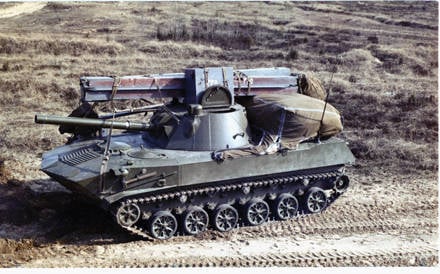
Needless to say, the new commander made the Pskov division the best in the Airborne Forces, and in just one year.
I personally met him in 1949 year. One day, the division commander, General Tavartkeladze, reported that the commander of the 76 airborne division, Hero of the Soviet Union, Major General Vasily Margelov, accompanied by his deputies and regimental commanders, was coming to us on a working trip. On the day of his arrival, he immediately declared that he was interested in the educational material base. Margelov consistently visited each of the paratrooper regiments; he was sharply told by Tavartkeladze’s invitation to visit the parade that he was not interested in the “show-off”.
It was interesting to watch them, the two divisional commanders. Tavartkeladze, as they would say now, “worked under Stalin”: a mustache, pants, a coat, and, of course, a cap. Margelov was the complete opposite to him: a slim, fit, perfect appearance, he had a clear inner force. That delegation reached the rifle-artillery range, where I conducted fire control classes. I approached, introduced myself, as expected, reported. Without hearing it, Margelov cut me off: “Well, Pavlo, show what you have here!”. At that time I had already managed to build a double-decker rifle range, and each battery had a barrel-carbine firing incendiary bullets, and there were also small mortars that sent a projectile meters to 200 and were quite suitable for training.
Margelov carefully examined everything, then he discussed something with the artillery commander (then the divisions were not commanders of artillery, but commanders), called me and said: “Gavrilo (as he called his deputy), Pavlo will give you his foreman for a month, so that he has done everything with us here. Clear?". The simplicity in circulation, personal ability, bypassing the rules of communication between the commander and subordinate established by the charter, clearly and clearly explain all the soldiers and officers to him.
And now, in 1949, the turn of our “courtesy visit” to the 76 airborne division has arrived. And we were genuinely surprised by the amount of work that Vasily Filippovich did in one year.
How to create "NONU"
In the 80-s of the twentieth century in the artillery of the Airborne Forces there was a real technical revolution. Not only 120-mm CJSC 2 С9 Nona, but also 1 B-119 Rheostat control vehicles, BTR-RD Robot anti-tank missile systems were put into service. The creation of these complexes worked unique teams.
Marshal of armored troops A. Kh. Babadzhanyan, head of the Main Directorate of Artillery Marshal of Artillery P. N. Kuleshov, director of the design bureau 9 of the Uralmash plant, brilliant designer artillery general FF Petrov, director of the Central Research Institute Tochmash V. M. Sabelnikov and, of course, A. G. Novozhilov, chief designer of the Nona gun.
Almost the entire post-war period, the fleet of infantry vehicles and weapons was replenished very slowly. By the beginning of the 1950-s in service were the same models as in the Ground Forces. Of these, it was possible to parachute only 82-mm mortars, the famous "bezotkatki" B-10, PBSB (the so-called parachute barrel) and PDMM (parachute soft bag) - that's all. The airborne self-propelled guns ASU-57 and SU-85 did not have time to appear - the requests of the Airborne Forces on the part of the means of warfare increased many times over.
When Vasily Filippovich Margelov was appointed commander, he clearly formulated that without his special weapons, airborne landing gears, and most importantly, airborne airborne vehicles could not be considered a full-fledged branch of the military. There are many hundreds of publications about his innovative activities, the creation of the world's first airborne assault vehicle (BMD-1), the development of parachute-reactive and multi-dome systems for its landing, so it makes no sense to retell it all again.
I also wanted to recall an important episode that occurred immediately after my appointment to the post of chief of artillery of the Airborne Forces. I then had the opportunity to speak very specifically with General Margelov:
- Look here - the infantry rides under armor and on armor, and what about you and your gunners? GAZ-66 pulls you on the trailer! Shame on you!
- We will work in this direction, comrade commander!
- That is your task! Starting today, harness the creation of a self-propelled artillery gun of the new generation!
The ASU-57 and SU-85 installations at that time were primarily anti-tank weapons, and the commander made a clear demand that the new artistema should combine the characteristics of a howitzer, a mortar and a gun, that is, it was necessary to create a universal weapon.
I knew that some developments in this plan were underway. The basis of the future product, as a rule, was taken chassis BMD-1, BTR-D - there were no others. Ultimately, the choice fell on the BTR-D. Put there the barrel 122-mm howitzers. Shot: the caterpillars, along with the tracks, crumbled along the entire length of the hull due to the strongest recoil.
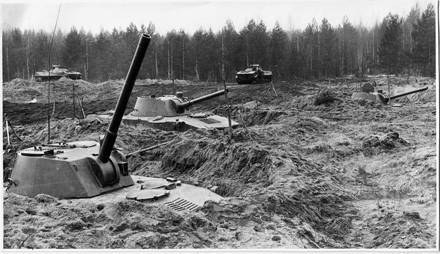
I had very good relations with the commander of the Missile Forces and artillery, Marshal Peredelsky, the head of the Main Directorate of Ukraine General Kuleshov, and Chief Marshal of the Armored Forces Babajanyan. Our friendship began when I went to them with the development of the BTR-RD "Robot". Babadzhanyan began to advise taking the GT-ME as a basis, but the base did not fit. I remember then Vasily Filippovich recalled that if there were any problems, it would be impossible for anyone to address him directly to him — he would surely not survive before his kind of penetration. I contacted the Research Institute Grau, the armored service and, finally, the outstanding designer Abner Gavrilovich. In the end, it was decided to make the barrel 120-mm mortar is not smooth, but rifled. After that, an ordinary mine was fired - it came out very well, and most importantly, the return was low. Soon the first prototype was ready, and we were talking about adopting the product. I, as the commander of the artillery of the Airborne Forces, was appointed head of the factory and field tests. They were conducted on the ground of the 76 airborne division in Strug Krasny, and the state on the artillery ground in Luga. Shooting was carried out using all known methods: from closed positions, direct and half-direct fire. Shells, specially designed for the product, was not yet, fired with ordinary 120-mm mortar mines. Then we were convinced of the unique capabilities of the 2 A51 cannon installed on the Nona. She really combined the properties declared by the designers — at the same time she was a cannon, a howitzer and a mortar she could even shoot with literally any type of foreign mines: Chinese, German.
Everything was ready for state tests, the teaching staff from the Leningrad Artillery Academy was invited ... Finally, Vasily Filippovich himself flew by helicopter. His eyes immediately lit up with a boyish twinkle, and he began to methodically shoot us with a hail of questions. “Is direct fire possible?” - Having received an affirmative answer, the commander went to the gun. Shouts: “Charge!”, Put the gun on direct fire, aim at the target - the layout tankinstalled at a distance of about 400 meters. We began to explain, they say, comrade commander, we shoot with caution, with all safety precautions, with the help of a cord from behind the shelter. Suddenly he says: “Yes, you are right!” - and right there she will shout: “Everything is for cover!”, And he himself goes to the gun. Personally fired, hit the layout. Satisfied, happy returns: “This is an instrument! Nowhere else is there in the world! ”
Approached the time of the final tests of the product 2 С9 "Nona", which took place at the test site near Moscow Kubinka. They invited Marshal Georgy Yefimovich Peredelsky, Pavel Nikolaevich Kuleshov, the head of the Main University, as well as representatives of the military industrial complex. Everything goes as expected, a report follows, then a familiarization with the tactical and technical characteristics, and suddenly Peredelsky imposes a “veto”. No, he says, I am against adopting this weapon. Vasily Filippovich was just taken aback: “Comrade Marshal, how is that so?” Peredelsky is adamant. And here Vasily Filippovich explodes. The flow of the great and mighty was so powerful that it seemed that everyone present under its weight was about to begin to bend down to the ground. As a result, even Peredelsky gave up - "Nona" was put into service.
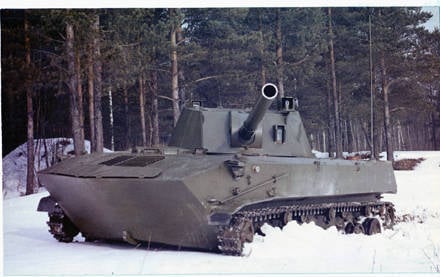
Time has confirmed the rightness of Margelov: "Nona" has proved itself from the best side. Many participants in the hostilities in the North Caucasus talked about "Nona" with undisguised admiration. The militants tried to avoid direct combat with paratroopers, in no small measure due to the fact that the 2 С9 batteries supported the winged infantry. In principle, this is explained very simply. First of all, 2 С9 is a tool of the “gun-howitzer-mortar” class and is capable of solving the widest range of tasks. "Nona" is airborne - this means that it is lighter, simpler in design. Yes, the performance characteristics in some parameters are more modest than those of such artillery systems of the Ground Forces as “Akatsiya” and “Msta”. Nevertheless, it was in the Chechen Republic, especially in its mountainous part, that the “Nona” revealed its potential, leading an effective, with a high percentage of hits, fire from closed artillery positions.
New Commander, New Tasks
In October 1972, when my appointment as chief of artillery of the Airborne Forces took place, Vasily Filippovich showed an extract from the inspection report by the Main Inspectorate of the MO 76 and 105 of the Guard Airborne Divisions, which stated that all units of the divisions were rated “good” "And" excellent ", and the artillery regiments and the self-propelled artillery divisions were rated between" beats "and" not satisfied ". Margelov firmly assured: "I promise any help, but only after the backs of the gunners are wet!"
Professional pride was, of course, hurt: how this “god of war” of the Airborne Forces could not show itself in a dignified manner.
1978 is already a year, the gunners' back is steadily sweating. I check a separate self-propelled artillery division of the 76 airborne division. At the battle shooting control panel, together with the division commander, I watch the progress of battery firing. At that time, they were armed with the ASU-85 - an airborne self-propelled artillery mount, replacing the ASU-57 and the former airborne card before the adoption of the famous "penny" - BMD-1. The 1 th fire platoon is unsuccessful, the 2 th fire platoon is unsuccessful. The next platoon ... Really! All target shields are affected. I order the division commander to call the platoon commander. A lean one, as in the song “with a steel light, has a light in his eyes,” Lieutenant, reports: “Comrade Major General! Lieutenant Shamanov has arrived at your command! ” The same Shaman, whom everyone knows today. Countryman, by the way. Future commander of the Airborne Forces.
Colonel-General Shamanov is a very modest person, he immediately abruptly stops excessive pathos and insatiable praise in his address, but I am sure that the proper time will pass, and people will appreciate the real scale of the work he has done. If we speak in the military, everyone needs an "exhaust", everyone wants a new equipment and weapons to flow into the airborne forces right now. But it does not happen. Neither the BMD-1, nor the “Nona”, nor the parachute systems that were new at that time appeared in the troops suddenly - it was a painstaking work that was stretched for a whole decade.
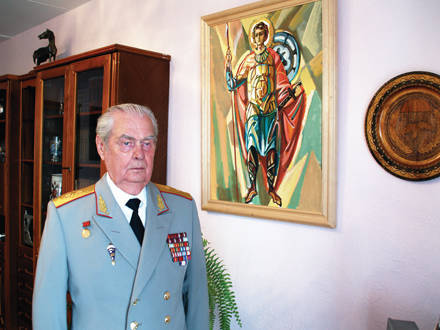
Vladimir Anatolyevich acts as a direct successor of the Marguela principles of military construction of the airborne forces If Vasily Filippovich “dressed” paratroopers in the armor of a first-generation airborne combat vehicle, Shamanov added to them considerable firepower with fourth-generation vehicles. We are talking about BMD-4 M, which the commander is actively promoting. The 1-mm smooth-bore semi-automatic Thunder gun was installed on the BMD-73, while the BMN-4 M already has an 100-mm gun-launcher and an 30-mm automatic gun paired with it. This is amazing firepower!
Great happiness for every paratrooper that the commander of the Airborne Forces is now Colonel-General Vladimir Shamanov. The front-line soldiers and veteran paratroopers with good reason believe that his activities in this high post will be as innovative and fruitful as the activities of Vasily Filippovich Margelov in his time.
Information